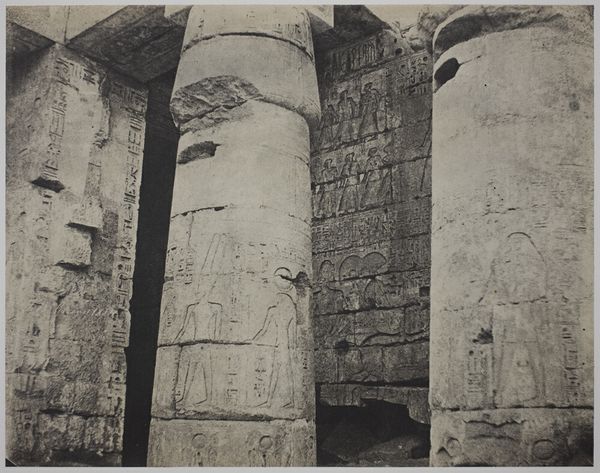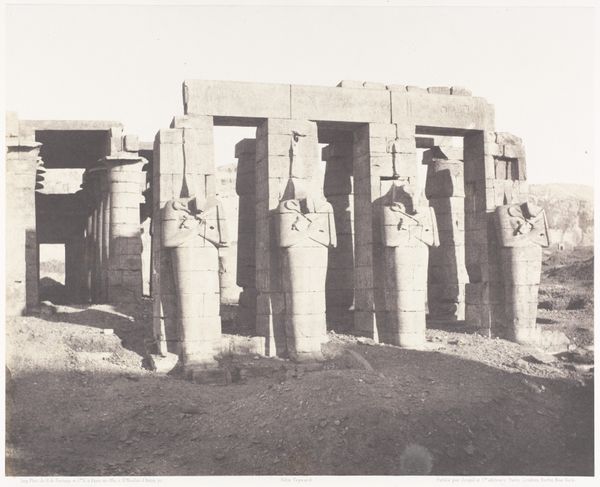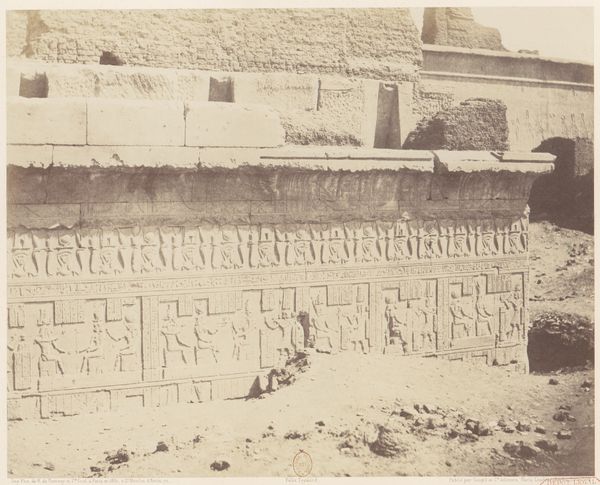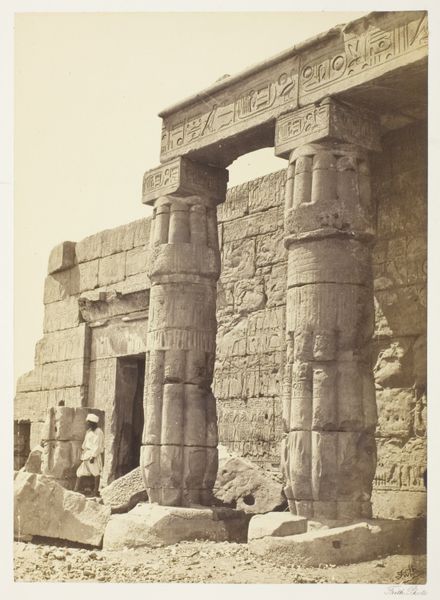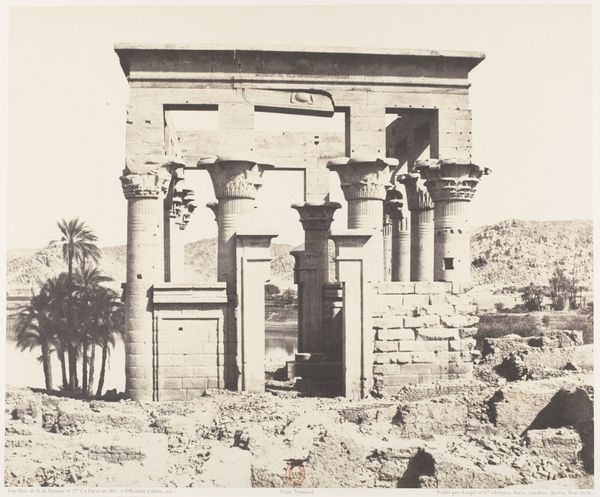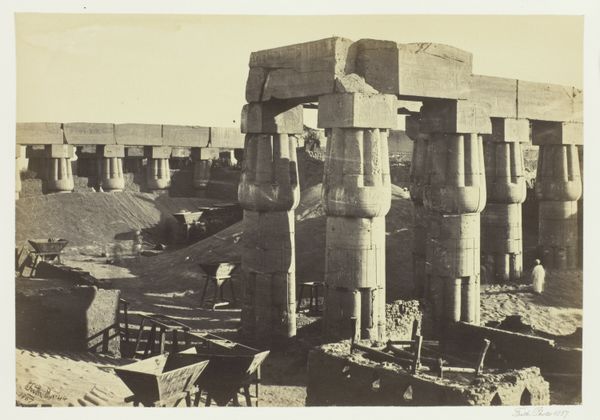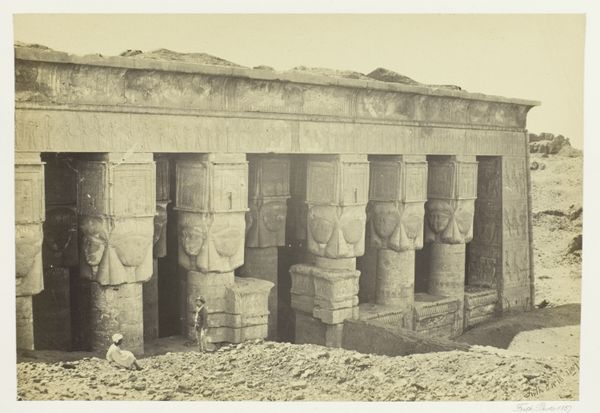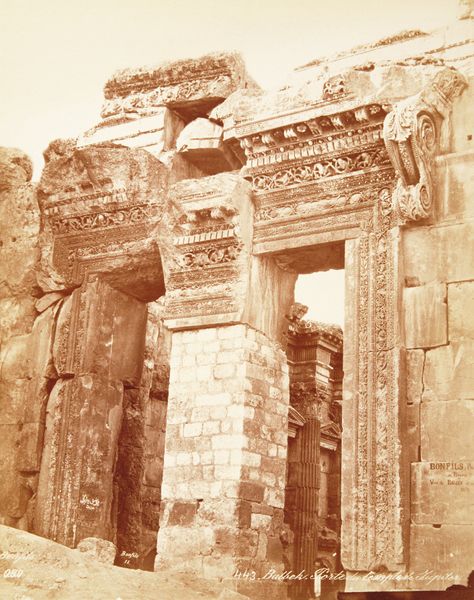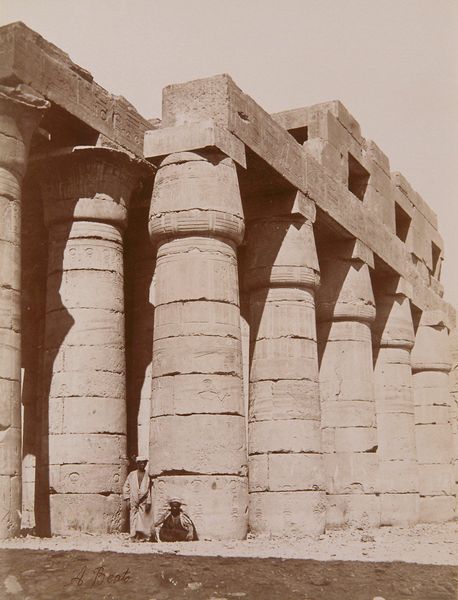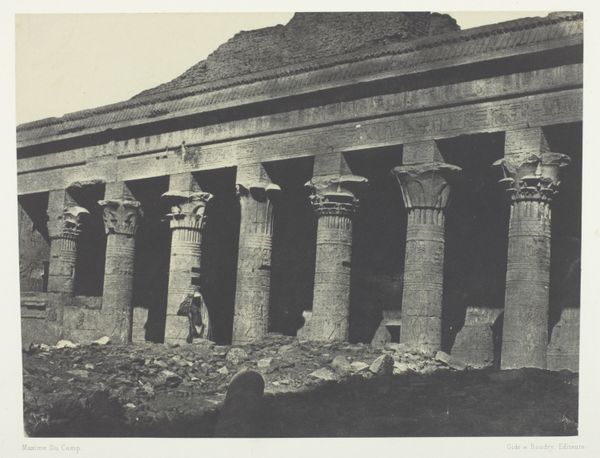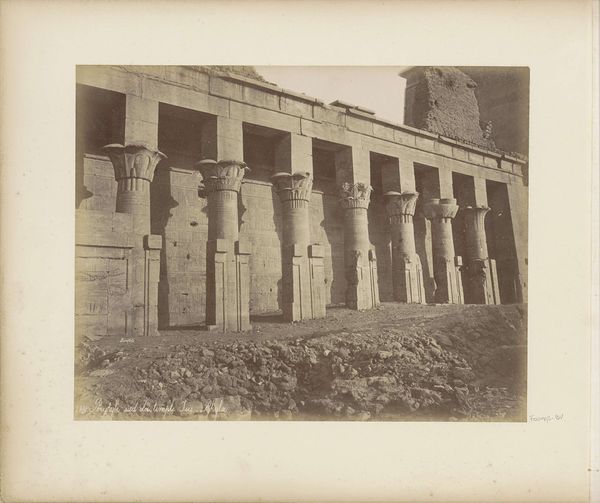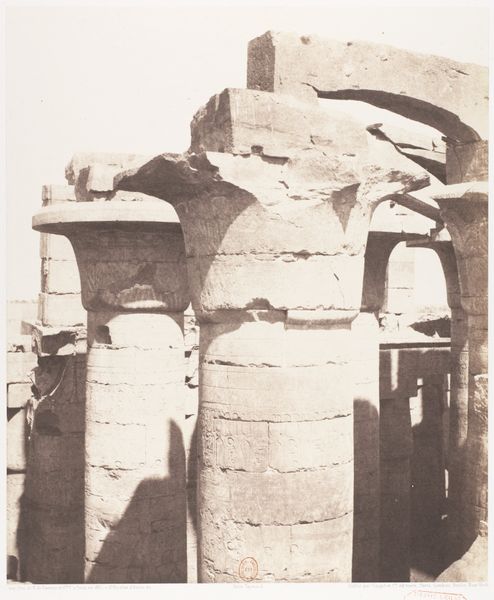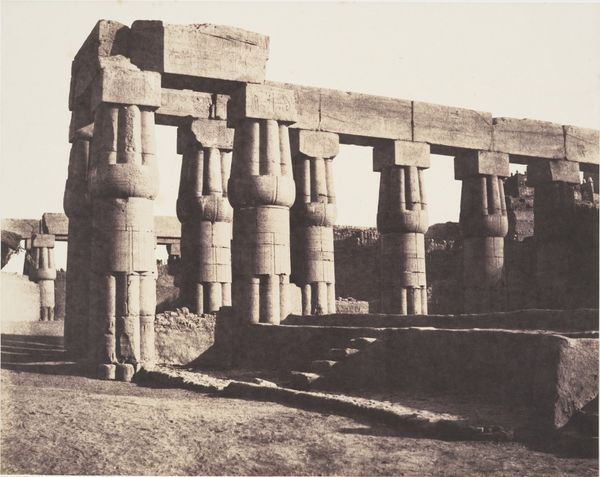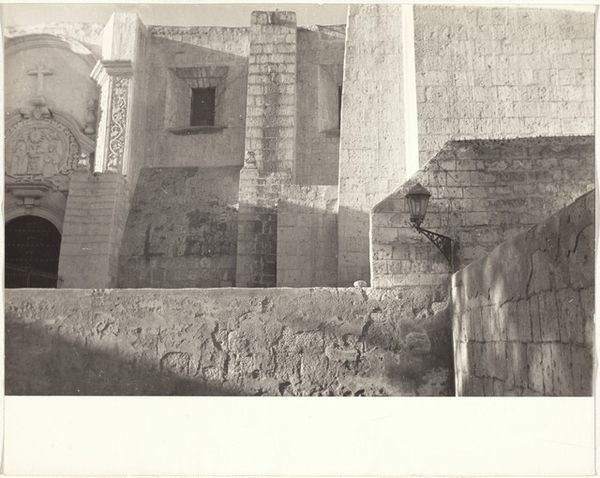
Esneh (Latopolis), Construction Ensablée - Architrave, Futs, et Chapiteaux 1851 - 1852
0:00
0:00
print, photography, architecture
# print
#
landscape
#
ancient-egyptian-art
#
photography
#
carved into stone
#
ancient-mediterranean
#
arch
#
19th century
#
architecture
Dimensions: 25.0 x 30.7 cm. (9 13/16 x 12 1/16 in.)
Copyright: Public Domain
Curator: This photographic print by Félix Teynard, created between 1851 and 1852, captures a portion of the temple at Esneh, or Latopolis as it was once known. Editor: The image evokes a powerful sense of time and decay. There's a textural richness—the rough-hewn stone, the deep shadows—that makes me feel like I'm standing right there. It really feels as if I am uncovering an Egyptian past, almost palpable. Curator: Absolutely. What strikes me is how Teynard frames the architectural elements – the architrave, the column shafts, the capitals – within the broader sociopolitical context of nineteenth-century Egyptology. The "ensablée" designation suggests a construction partly buried by sand, highlighting the act of European rediscovery and its implications for colonial power structures. Editor: The symbols are heavy, aren't they? Consider those lotus-shaped capitals; they aren't mere decoration. They carry within them the echo of ancient Egyptian cosmology, the cyclical nature of life, the daily rebirth of the sun… There's also a fascinating juxtaposition – the fragile medium of early photography used to capture something so enduringly monumental. Curator: Yes, and think about how photography itself as a medium participated in shaping Western perceptions of the "Orient." Teynard's images, while seemingly objective records, were inevitably influenced by the biases and assumptions of his era. It's imperative to critically analyze what these photographs omit, conceal, or implicitly reinforce regarding power dynamics. Editor: But regardless of intention, the lasting effect on us, here and now, lies in the capacity for the symbolic to stir emotion. You gaze at these columns and it almost transcends history, accessing something profoundly and mysteriously ancient. It calls to something primal. Curator: A tension persists though; a tension born from that interplay between historical authenticity and constructed representation. These images, so evocative of ancient grandeur, circulated within very specific colonial narratives, influencing everything from tourism to art history. The photograph isn't just of the site; it's implicated in its subsequent historical journey. Editor: So while you consider the social implications and narratives behind the image and its role, I reflect on how we continue to attach meanings, however subjective or layered, onto the artifacts and enduring symbols they reveal. It reminds us we're never truly detached from the weight of cultural memory. Curator: Precisely. It prompts us to consider the intertwined trajectories of the artwork, its maker, and its beholders – both past and present. It also makes you consider issues around who has control and access to our shared visual language and how to redress any lingering imbalances that follow from colonial practices.
Comments
No comments
Be the first to comment and join the conversation on the ultimate creative platform.
